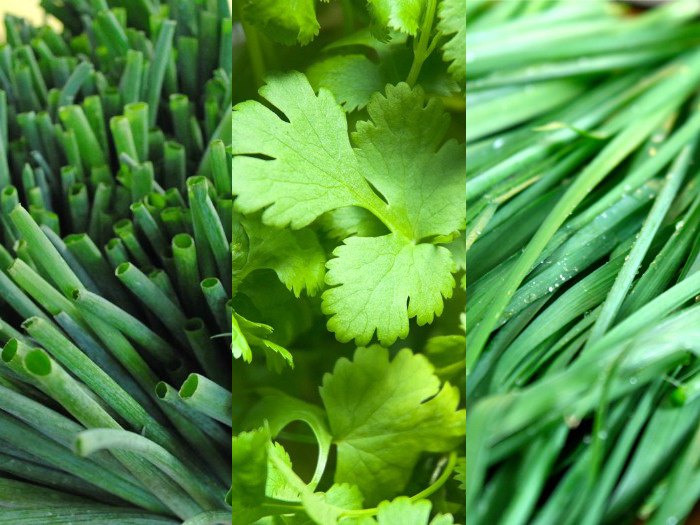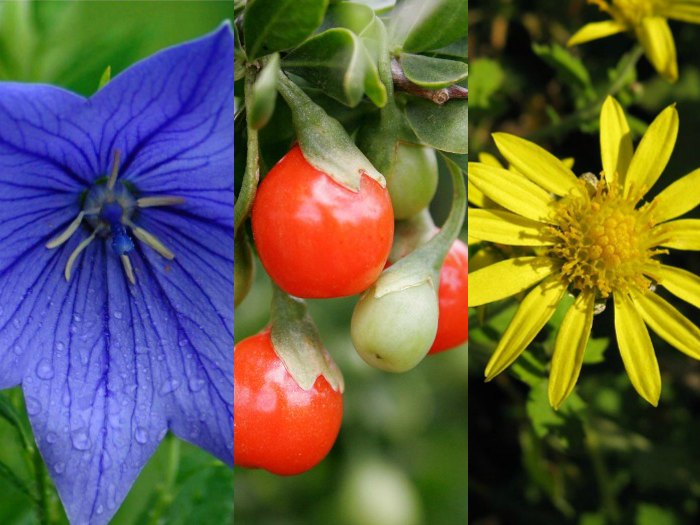This post is part of our collection of Home Projects. Sign up for our newsletter to receive family-friendly activity, recipe and craft ideas throughout the year!
Spring is here! And with it, planting season.
Sunny windowsills in Chicago, raised beds in Northern California and even fire escapes outside New York City apartments beckon — all are ready to host bountiful home herb gardens! Retire the basil (or just make some extra room!) and let’s plant a Chinese herb garden at home that will keep you eating well and feeling great throughout the year.
Grab the kids and head outside. Here’s how to start.

Culinary Herbs for the Kitchen
Both Pat Tanumihardja, author of the The Asian Grandmothers Cookbook, and Yi, a seasoned Chinese home chef who writes at Yi Reservation, suggest that green onions, Chinese garlic chives and cilantro are among the easiest and most useful herbs for Chinese home chefs to grow. Many common Chinese dishes use these herbs either as ingredients or garnishes, meaning you’ll get repeated use from your harvest.
For instance, Yi’s Chinese Chive Dumplings are chock full of garlic chives, his Sichuan Spicy Beef Stew is garnished with fresh cilantro and the filling for his Crab Rangoons benefits from a healthy dose of chopped scallions. Pat highlights fresh scallions mixed in her family’s Egg Omelet and used as a garnish in a comforting bowl of Congee, while both cilantro and scallions make it into a new variation of the dim sum favorite, Taro Root Cake, that substitutes pumpkin for taro.
While your local Chinese grocer and even Home Depot may sell the seeds you need, Pat recommends johnnyseeds.com for Asian vegetable seeds, many of them organic. She adds, “Cilantro and chives can be grown from seed and you can propagate green onions just by saving the root ends when you buy them from the store and sticking them in water!”

Medicinal Herbs for the Mind & Body
Many Chinese herbs carry healthful medicinal properties, though many can be toxic in isolation without the holistic balance of other herbs in a typical prescription. As a result, Elaine Sedlack, a horticulturist at the University of California Botanical Garden’s Chinese Medicinal Herb Garden, suggests home gardeners start with benign herbs that can be used individually, possess culinary applications and which are easy to grow.
Among Elaine’s favorites are Balloon Flower, a long-lived perennial commonly boasting lovely blue flowers and whose root is used in the treatment of coughs and sore throats. Chrysanthemum is easy to grow and can be combined with honeysuckle and mulberry leaves to make a tea for warm summer heat symptoms. Finally, Boxthorn produces the red goji berry, which can benefit the eyes.
In terms of growing these herbs, ordinary garden care and good soil are the basic prerequisites, though Elaine points out that the Balloon Flower may require a cage, “as gophers grow very healthy eating them!” Additionally, Boxthorn requires a warmer site without too much water and may produce more fruit if it is cut back hard in the spring.
Additional Resources
READ — The Chinese Medicinal Herb Farm: A Cultivator’s Guide to Small-Scale Organic Herb Production by Peg Schafer, Oriental Vegetables: The Complete Guide for the Gardening Cook by Joy Larkcom and 10 Chinese Herbs to Cure What Ails You by Michelle Slatalla on Gardenista.
VISIT — The Chinese Medicinal Herb Garden at the University of California Botanical Garden in Berkeley, CA, and the Chinese Medicinal Herb Farm in Petaluma, CA.
BUY — You can find seeds for many Chinese herbs at johnnyseeds.com, the Chinese Medicinal Herb Farm web site and at The Plant Deck at the University of California Botanical Garden.
Your turn! Have you thought about planting a Chinese herb garden in your back yard? I’d love to hear from you in the comments section below!
HT: Photo by Mother Earth Living.





Meghan
Hi,
Thanks for so many interesting posts!
Would you be able to tell us about the varieties of greens in Chinese cooking and markets?
thank you so much,Meghan
Wes Radez
Hi Meghan, thanks for that great article idea! I’ll add it to my list. ~Wes